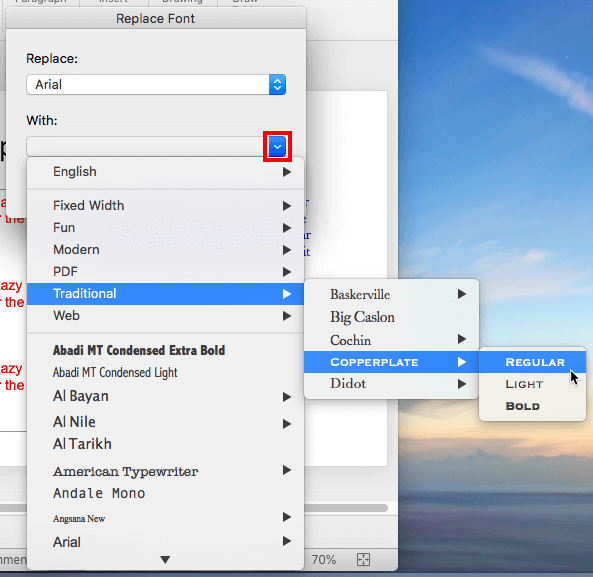
You can pair them and tap into their strengths. Create visual interest with serif and sans serif fontsĪs we emphasized earlier, serif and sans serif fonts have their own advantages and disadvantages. You can use them if the topic of the talk demands it. Script fonts like Lucida Calligraphy or Gothic fonts like Century are always difficult to read.
#Locate fonts in ppt for mac windows
Tip: Here’s a complete list of fonts available on Windows 10.ģ. You can be more imaginative if you are presenting to children or at Comic Con, but standard fonts are the safest bet always. Choose from standard fonts and you won’t have to rescue your slides from turning into a mishmash on another screen. You want your presentation to look the same on all devices. But play the TypeConnection typography game if you want to get better at it yourself. Tip: There are many font pairing tools available on the web. The second font shouldn’t be too unlike or too similar to the primary typeface where you miss the distinction. Font pairing is a critical part of PowerPoint presentations and you will have to spend a lot of time on this decision. Choose two fonts wisely and use size, contrast, and color to combine them for visual interest. With that motto in mind, follow these Microsoft PowerPoint tips to choose the best fonts for your business presentation or any other. You can use the same font for both, but that can limit the visual impact of your slide.ġ0 tips for choosing the best font for PowerPoint presentations The default slide in PowerPoint starts with 60pts for section headers and 24pts for body font. The thumb rule - a larger font size with less text on screen is always good. Most presentation experts recommend these size ranges. Arial is clear at 12pts while Times New Roman is readable at 10pts.
#Locate fonts in ppt for mac Pc
Font sizes can hinge upon you emailing the presentation or delivering it live on stage or on a PC screen in a remote meeting.Īlso, all fonts have an optimum size for legibility.

Factors like screen size and room size dictate the limits of font size. The first question you may have to answer is how big your fonts should be? The simple answer is that it depends. The theme plays an important role in the font choices and even blank presentations give you a theme to build upon. This font pairing decides the entire look of the presentation. The critical font pair: title vs body textĪll Microsoft PowerPoint presentations by default start with two fonts - one font for the headings and one for the body text. That’s why designers recommend sans serif fonts for titles, headings, and captions in your slides.

They lose this clarity if you pack them together in the body. Letters appear bigger and bolder and viewers can see them from a distance. The word “sans” means “without” to show the absence of the tiny extensions on the letters.

Serif fonts have distinct line heights that make them more legible in dense copy.Īrial is the classic example of a sans serif font. Newspapers and magazines use serif fonts for body text as they are easier to read. The letters have tiny extensions that appear to connect them together in words as one letter leads to the next. Times New Roman is the classic example of a serif font. Typefaces are also brand symbols that help the audience relate to it through the presentation.īefore you get into the deep end, let’s learn the distinction between two major font types. The right choice of fonts or font pairings can make your text stand out by separating it from other elements around it. The words on the slides have to capture interest, send the right message, and support the visuals in those few seconds.įonts influence your audience by setting the tone and atmosphere of the presentation. When you run through your slides, they will linger for just a few seconds. Why is choosing the right fonts so critical?


 0 kommentar(er)
0 kommentar(er)
